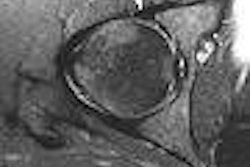Information about MRI safety made it into the public press in 2005 more so than the years prior, from the front page of the New York Times to "Good Morning America" to local newspapers and TV news broadcasts.
But many of these stories have been presented as if MRI-related accidents were pure curiosities. But what if healthcare consumers began questioning their personal safety during an MRI? What questions might they ask their MRI center?
WSOC, a TV station in Charlotte, NC, offered 10 questions for MRI patients to ask their doctor or MRI provider. But do these questions really address suite safety issues? Or are they, at best, watered-down hype and, at worst, pure marketing hyperbole?
Because there isn't any real facility safety scorecard, and because so many safety issues really can't be evaluated without an understanding of a larger context, it would be difficult to create a probative list of even 100 questions. But, with that caveat, I think that these 10 questions do identify a number of criteria that can serve as a litmus test for a facility's regard for operational safety issues.
Below are the 10 questions, reprinted with the permission of WSCOTV, as published on the station's Web site:
1. Are the facility and the technologist(s) accredited?
The American College of Radiology (ACR) has issued guidelines for MRI facilities and personnel. Certification is not a guarantee of safety. However, facilities that take the time to achieve certification may be more likely to take safety issues seriously and adhere to safety guidelines.
2. Does the facility follow the ACR's four-zone safety and screening procedures?
The ACR has divided MRI facilities into four safety zones, each with separate screening. Zone I is the area outside the building. Zone II is the area inside the facility. Zone III is the area just outside the magnet room. Even though Zone III is outside of the immediate scanning area, there is still a potential for magnetic fields to interact with susceptible devices. Zone IV is the magnet room, where the risk of dangers is the highest.
3. Is there an MRI-safe fire extinguisher?
Traditional fire extinguishers are made of metal and can be attracted by the MRI magnet, which could pose a significant danger if a fire broke out in the room.
4. Are the furniture and equipment in the room MRI-safe?
Metal beds, IV poles, and wheelchairs can be very dangerous in the MRI suite. Removing an object once it has become attached to the strong magnet can be very difficult, and it can take several people to pry the object off the machine.
5. Where are outside metal objects stored in the facility?
Sometimes patients come to be scanned in their own wheelchairs, or with their own oxygen tanks or equipment. The MRI magnet can attract any metal in these items. Therefore, the facility should have a dedicated area where potentially problematic equipment and personal items can be safely stored.
6. What happens if a patient develops breathing problems while having a scan?
Some facilities are equipped with special oxygen sources that can be used during a scan. However, if a patient requires any type of medical attention, he or she should be removed from the room and taken to a safe area before treatment is given.
7. What steps do you take to prevent someone from bringing unsafe objects into the magnet room?
MRI facilities should screen patients for any metal objects. Checklists are often provided to reduce the chance something will be overlooked (such as a metal snap on a piece of clothing). Some facilities are using special metal detectors that detect the presence of iron in objects.
8. How do you prevent inadvertent entrance into the room during a scan?
People who accidentally wander into the room during a scan may bring along pens, cleaning equipment, or other metallic devices that could be pulled into the scanner. If there is no locked door into the magnet room, the MRI technologist should have a clear view of the door to watch for unauthorized entry.
9. Is everyone who will be in the suite during the scan trained in MRI safety?
MRI facilities should train all staff in safety measures -- including those in housekeeping, transportation, and administrative positions.
10. Does the facility share space with other types of imaging devices?
If CT scans, x-rays, PET scans, or ultrasounds are offered in the same facility, there is a chance a patient receiving a different type of scan may wander into the MRI area. If the person carries anything metal, the object could potentially be grabbed and drawn into the magnet.
Establishing safety
The only institution mentioned by name in the above 10 questions is the ACR, which is appropriate to any conversation about MRI safety. And while the call for ACR accreditation may be a bit much, some form of professional accreditation is a significant first step in establishing a safety baseline.
I would have to give these 10 questions a B+. And to the question posed in the title of this article, I would have to say that the issue is indeed real.
Beyond recommending them to patients, I would encourage imaging providers to send copies of the 10 questions -- and how your facility answers each question -- to all of your referring physicians. Let them know that you care about their patients' safety.
By Tobias Gilk
AuntMinnie.com contributing writer
February 15, 2006
Reprinted from www.mri-planning.com by permission of the authors. If you would like more information on any aspect of MR facility design or safety, please contact Robert Junk or Tobias Gilk at Jünk Architects.
Related Reading
MRI-guided cancer treatment, February 1, 2006
MRI and cancer diagnosis, January 6, 2006
Hurricane epilogue: An MR emergency preparedness primer, December 26, 2005
MRI vendor suite templates: What they don't show, December 8, 2005
Hitting the ceiling over HIPAA-required walls, December 6, 2005
Copyright © 2006 Jünk Architects, PC


.fFmgij6Hin.png?auto=compress%2Cformat&fit=crop&h=100&q=70&w=100)





.fFmgij6Hin.png?auto=compress%2Cformat&fit=crop&h=167&q=70&w=250)











